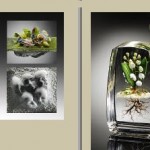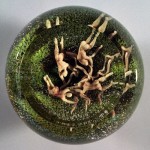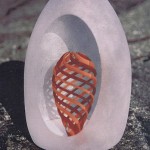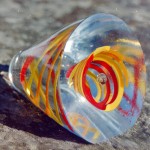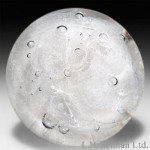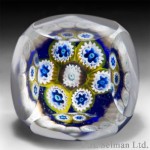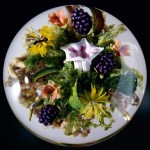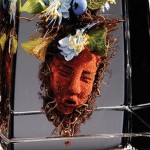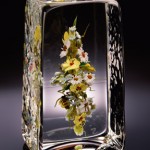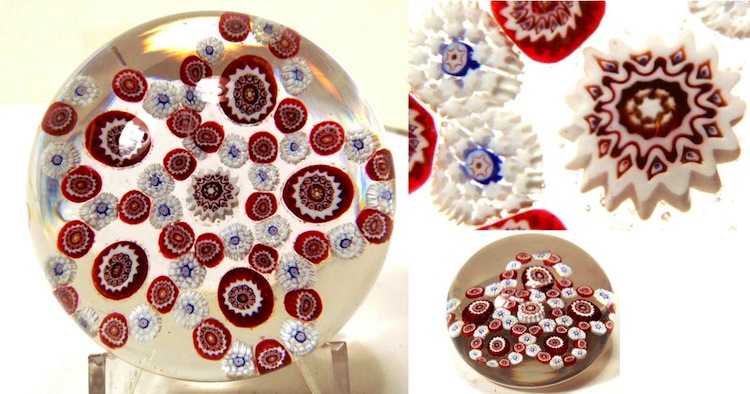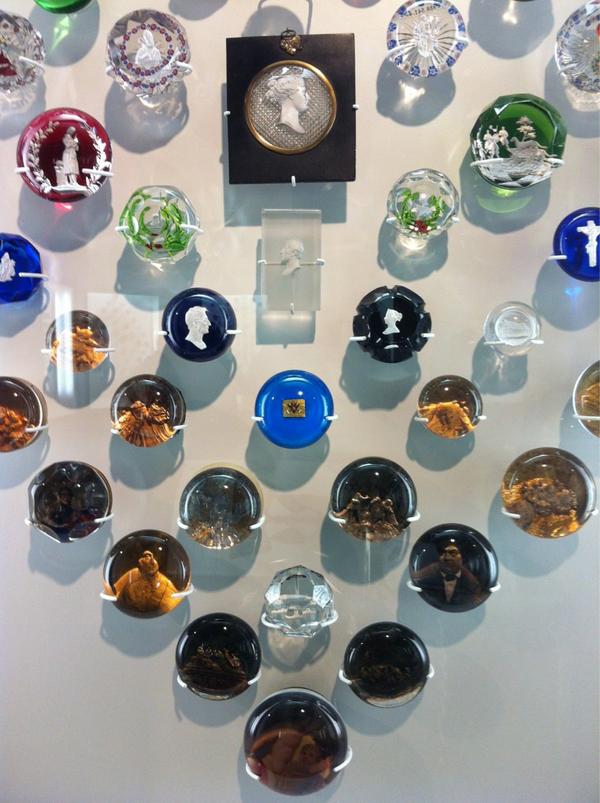- Paperweights by Stankar who also used different shapes.
After about 1860, the era of fine paperweight making was over. It wasn’t until 1950 that they came back into vogue and production began again in earnest in factories in many different countries. Caithness Glass is one of today’s leading manufacturers producing a wide range of designs, sizes and shapes from the traditional round dome to oblongs, mushrooms and elongated domes.
There are also talented individuals producing paperweights. The best known is probably American Paul Stankard, who describes himself as an artist in glass. No less an authority than Dwight P. Lanmon, director of the Winterthur Museum Garden and the former director of the Corning Museum of Glass says Paul Stankard has established the standard by which to judge modern paperweight art.
As well as the traditional shape, he makes them as cubes, orbs and oblongs and they contain the most delicately beautiful and realistic flowers. His work is displayed in New York’s Metropolitan Museum of Art, the Musée des Arts Decoratifs in Paris and the Hokkaido Museum of Modern Art in Japan.
In the early 1960s, paperweights made by other American paperweight makers showcased brightly coloured type flowers that were not botanically accurate. Stankard laboured to make his glass floral designs look more natural and botanically life-like. His glass flowers were so real looking that many people mistakenly thought that he had found a way to encase actual flowers in glass. Soon thereafter, paperweight makers (mostly American) were following Stankard’s lead.


